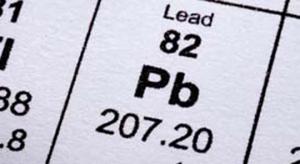Lead Exposure
Lead is a toxic metal that is widely used in numerous working environments including construction sites and manufacturing facilities. It is also found in various types of batteries, glazes, plastics, and many other building materials. Due to the health hazards posed by lead exposure, it is important to prevent exposures by implementing safety procedures, providing appropriate personal protective equipment, conducting proper handling and disposal of lead-containing materials, and completing required training programs to educate individuals about the risks and necessary precautions. By prioritizing prevention, working environments can significantly reduce the risks associated with lead exposure and ensure the health and safety of all individuals.

Occupational Sources of Lead
The following are common tasks which may expose individuals to lead in occupational settings:
Handling lead bricks, pellets, or other solid lead materials.
Working with lead-containing paints.
Welding, cutting, or brazing (Hot Work) of lead-containing materials.
Art studios or other workshops that utilize oil-based paints, lead wire or tape, lead sheeting, and metal alloys.
All recommended guidelines and procedures must be followed for any potentially affected individual working with lead-containing materials.
Health Risks Associated with Lead Exposure
Lead enters the body primarily through inhalation and ingestion. These exposures pose significant health hazards, affecting various body systems and causing both acute and chronic health issues. Some of the main health hazards associated with lead exposure include:
Neurological Effects - lead primarily targets the nervous system and can lead to learning disabilities, behavioral problems, and impaired cognitive function.
Cardiovascular Effects - chronic exposure has been linked to hypertension and an increased risk of heart disease.
Renal (Kidney) Effects - lead exposure can cause kidney damage, leading to impaired kidney function and possible kidney failure.
Reproductive Effects - lead exposure can cause reduced fertility, miscarriages, and developmental issues in newborns.
Acute Poisoning - in cases of high exposure over a short period, acute lead poisoning can occur, leading to symptoms such as seizures, coma, and even death.
Other Health Impacts - chronic exposure can lead to other health issues, including joint and muscle pain, memory loss, and mood disorders.
Preventive Measures and Safety Procedures
Pre-Project Planning
Prior to projects taking place, Environmental Health and Safety (EHS) can review planning documents to account for potential exposures to hazardous materials, including lead. EHS can also conduct building material assessments to determine if there are any lead-containing materials that may be impacted by the project. If lead-containing materials are to be disturbed during the project, the appropriate exposure control methods will be recommended by EHS.
Exposure Monitoring
Any employee who is expected to come in contact with or work with lead-containing materials where there is a risk of exposure through inhalation of lead dust should develop an exposure monitoring program. EHS should be contacted to perform the initial monitoring to quantitatively evaluate the exposure to airborne lead.
Engineering/Administrative Controls
Where lead exposures have been documented or expected, the appropriate engineering or administrative controls will be implemented, where feasible. These may include the utilization of local exhaust ventilation systems, workplace hygiene practices, and exposure monitoring.
Personal Protective Equipment (PPE)
Individuals may be required to wear specific PPE during the handling of lead-containing materials. The level of protection will depend on the task being conducted and the tools being utilized to complete the task. Refer to the Ohio State University Lead Safety program to see PPE recommendations on various processes.
Housekeeping and Hygiene Practices
In areas where lead-containing dust may be present, all surfaces should be maintained free from accumulations of lead dust to minimize potential exposures. Dust and other lead-containing debris must be removed from working areas as soon as possible. Other acceptable methods of lead dust removal include using HEPA vacuums or wet methods. All personnel should follow recommended procedures and wear personal protective equipment during lead-containing debris cleanup activities. Regular handwashing and hygiene practices are also highly recommended to lower the risk of exposure.
Proper Signage
In areas where exposure to lead may exceed the Permissible Exposure Limit (PEL), the following signage must be in place to warn individuals of the hazards.
Be safe today and remain a Buckeye tomorrow.